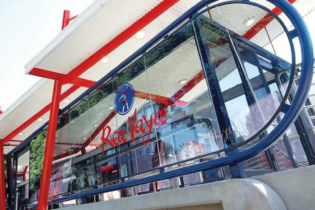Private sector service providers looking to enter the public sphere should be willing to move beyond simply meeting the basic requirements of a project as defined by the public sector Terms of Reference (TOR).
This is according to Gill Jones, Director of Client Solutions at UTi. Jones, in her presentation during the recent 37th SAPICS conference, validated how effective public-private partnership engagements can be in improving the lives and futures of ordinary South Africans. Jones advises that the private sector be willing to learn lessons at risk and at a cost to the business for a period of time, but should work on building a trust relationship while learning those lessons. “The risks taken and profit sacrificed might not make traditional business sense, but it has a bigger goal – the heart of the supply chain – that of providing services of a high quality to South Africans.” South Africa’s future, its success, rests upon the upliftment and education of her youngsters. While more than 20% of state expenditure is allotted for the purpose, the timely delivery of resources to around 11 million learners, more than half of whom are in rural schools, is testing.A partnership that does more than ‘just’ work. Private courier and logistics firm UTi and the Lebone Litho Paarl Media Joint Venture (JV) were tasked by the public Department of Basic Education (DBE) with the distribution for the WorkBook Project. The state-funded initiative delivers nearly 60-million of the books throughout South Africa.
Unlike textbooks, workbooks are provided for learners to practice their language and numeracy skills – those already taught in the classroom. The UTi-JV-DBE partnership saw workbook deliveries to learners improve from below 95% in 2011 to a staggering 99.9% in 2014. Learners not only had their workbooks on time, but six months prior the start of classes.
A lack of accurate data prompted UTi to recommend that a database cleansing process be followed, allowing the company to streamline distribution. “Although database cleaning and maintenance was not in the TOR of this project, it delivered immense value in terms of meeting and exceeding project deliverables, and in the end achieving the truly important objective of getting the right textbooks to the right schools at the right time,” Jones explains. How to make Public-Private Partnerships work“Working in the public sector, you are bound to very strict Terms of Reference. As a private sector provider, working on that size of project with public sector for the first time, you have to remember that you are dealing with public funds that need to be regulated according to the upfront-agreed TORs”,” says Jones. “Once you’ve won the project, and you start setting up Service Level Agreements (SLAs), you are bound to the rigid TORs, with no room for negotiation on either time or price.” Jones doesn’t want these facts to put off private sector providers from engaging with the public sector and ultimately achieving the best possible service delivery for South African citizens. “Just keep in mind that with limited information you have to cost a responsible risk factor to it,” she explains. “From there on it is up to you to stay focused on the end goal, and let your experience guide you in building trust relationships that will allow innovation to be to the benefit of the greater good.”








